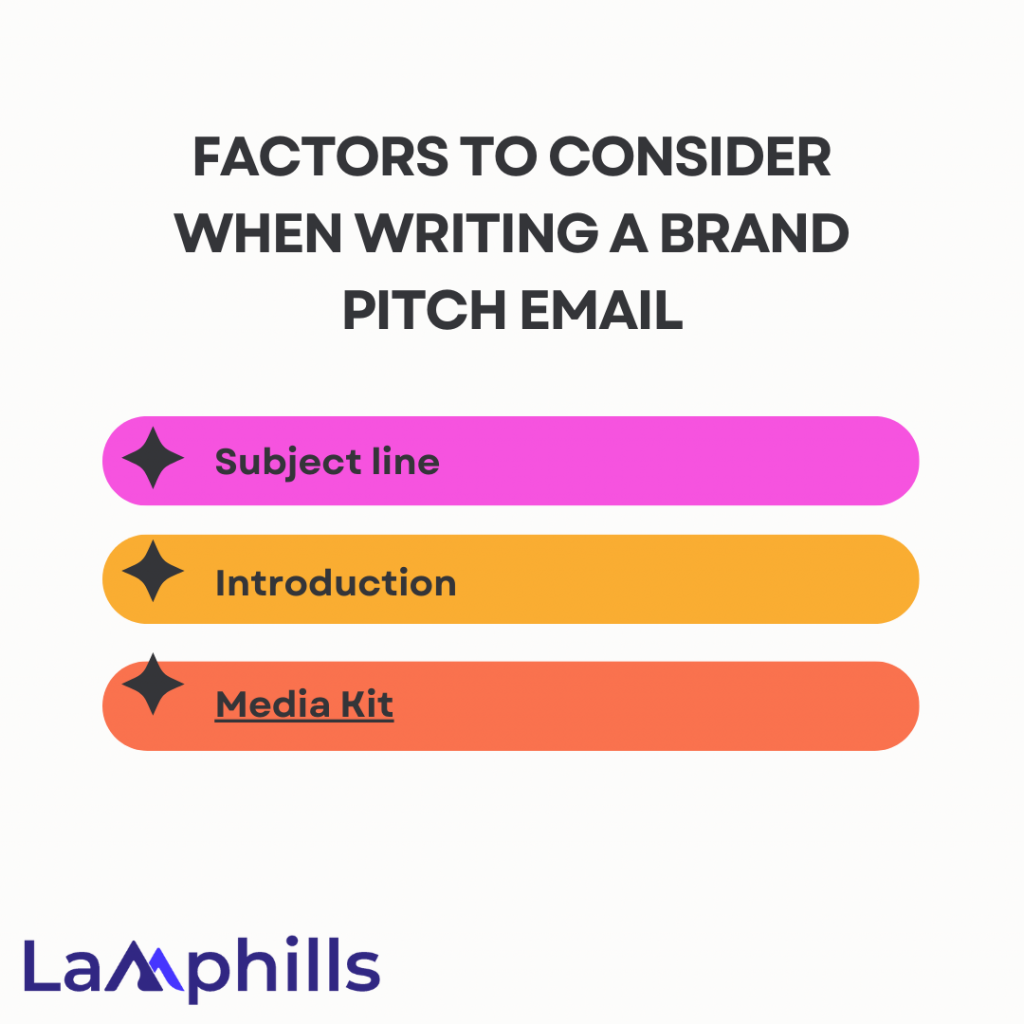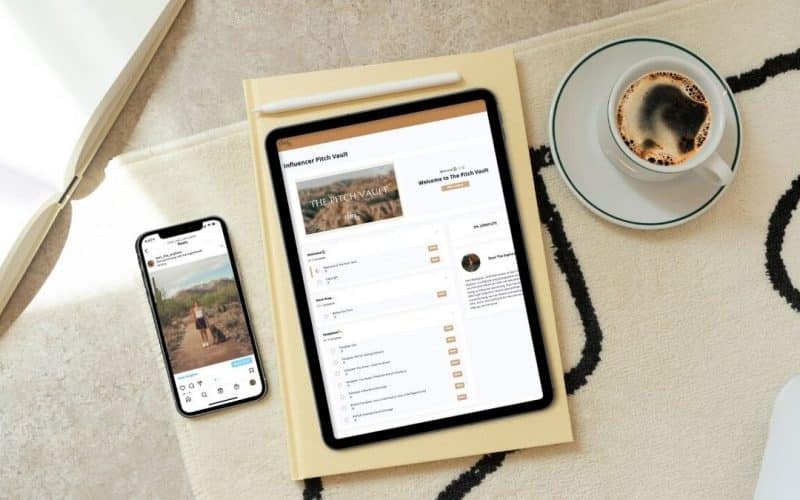When I first started creating brand pitch emails, I struggled to get potential clients’ attention. My emails frequently went ignored, and I could not find out why. Then I discovered the tactics employed by a prominent corporation to land 85% of their clients with properly designed pitch emails. The change was night and day. In this article, I’ll provide these brand pitch email templates, which are supported with statistics and insights that you won’t find elsewhere. Let’s look at the secrets behind their success and how you may use these tactics to increase your client acquisition.
The Value of Effective Brand Pitch Emails
In today’s competitive business world, a strong brand pitch email might mean the difference. According to a HubSpot study, personalized emails increase click-through rates by 14% and conversion rates by 10%. However, many organizations fail to fully exploit this great instrument.
I recall the first time I utilized a well-designed pitch email template inspired by a major corporation’s strategy. The response was astounding. Not only did I receive responses, but I also acquired numerous new customers. This encounter demonstrated the transforming potential of well-written emails.
What Makes an Effective Brand Pitch Email?
A great brand pitch email should be straightforward, succinct, and individualized. It must rapidly attract the recipient’s attention while also conveying the value of your brand. Here are several important elements:
- Personalized Greeting: Include the recipient’s name and company details.
- Catchy Subject Line: Use a catchy subject line to increase open rates.
- Value Proposition: Explain what you offer and how it benefits the recipient.
- Social Proof: Include relevant case studies, testimonials, or major clients.
- Call to Action: End with a clear and compelling call to action.
3 Factors to Consider When Writing a Brand Pitch Email

Whatever field you operate in as an influencer, your pitch should be based on three constants.
Let’s look at these elements, assess their value, and explain how to handle them properly.
#1. Subject line
A pitch subject line is the first text line that a recipient sees after opening your email.
This is what it looks like in the inbox.
A subject line is critical to the effectiveness of your pitch, partly because when written effectively, it can raise email open rates.
Consider this: according to HubSpot, 35% of receivers read emails based only on the subject line. As a result, if your subject line does not pique the recipient’s interest, you may essentially lose a quarter of all email pitching possibilities.
So, what goes into creating a subject line that entices your target audience to click?
Here are some elements you absolutely consider:
- Personalization: According to InvespCRO, tailored topic lines increase open rates by 22.2%. In addition to mentioning the recipient’s first name, you can appeal to their hobbies or hint at the prospects you’re providing in an email.
- Emojis: Yes, including a grin in your subject line is a legitimate strategy; organizations that do so have a 56% higher open rate than those that do not. However, it will only work if you utilize contextually appropriate emojis and avoid stuffing your subject lines with them.
- A/B testing: This method enables you to determine which subject line variable your target audience will positively respond to. Including this step will greatly boost your pitch’s click-through rate, as it did for Skandium (the company increased its CTR by 26.96% via A/B testing). When it comes to A/B testing, various email marketing solutions can help.
- Finally, you should follow common guidelines to prevent spam filters. Influential aspects include your IP reputation, trigger words (for example, extra cash, increased sales), and so on.
#2. Introduction
An email introduction is part of your pitch in which you present all necessary information so that the receiver can get to know you better.
This section is critical for creator pitches since putting it together correctly can make a lasting positive impression on brand representatives. But here’s the thing: it can’t be too long, otherwise your email will become dull self-promotion.
So what should you include?
Here are the essentials, with some recommendations:
- Begin with your full name and the name of your social media account: You should start your pitch by introducing yourself and providing a sneak peek at your web presence. Don’t forget to specify the niche your channel belongs to. For example, if you’re a TikTok influencer, you can include your entire name, TikTok handle, and an embedded link to your channel.
- Refer to a mutual contact: To increase your chances of receiving a response, mention someone you and the recipient know and explain how you discovered their brand.
- Appeal to a common interest: This may be a recent post or a campaign launched by the brand that piques your interest, or anything else that could create a conversation.
Once you’ve introduced yourself, you can begin exploring the possibilities for partnership with a certain brand.
Include statistics and results from previous collaborations to demonstrate your experience.
#3. Media Kit
An influencer media kit is a document that summarizes your abilities, provides proof that you have engaged following, and emphasizes the benefits of collaborating with you.
Essentially, you need this document to show your plan to the organization with which you want to cooperate; you can also refer to it as your influencer résumé. Sharing a media kit enhances professionalism, improves communication, and leads to better negotiations. What does it include?
- A bio: This section should begin with your entire name, location, and a description of your personality, including your values, hobbies, and experiences. Finally, a section of the bio should be dedicated to your channel and its direction.
- Performance statistics: This area contains your follower count, engagement metrics (e.g., reach, likes, comments, mentions, total engagement rate), and audience demographics. You can also discuss your weekly publishing plan, the types of posts you create and which ones perform best, and the follower growth trend for several months.
- Case studies: Don’t be afraid to brag about your previous experiences with different products. However, make sure that the examples you choose are from the same industry as your point of contact. We should also mention that you can offer polls of your former clients to increase trust.
- Visual portfolio: Here, you can include examples of your work, such as photographs and videos. These examples should all be of good quality.
- Rates: This section focuses on the compensation you can expect from cooperating with a specific brand name. Furthermore, disclosing your fees upfront will ensure that you are compensated for your portion of the task.
- Contact information: Finish your media kit presentation with contact information, including your or your marketing manager’s phone number, email, website, and social media profiles where brand representatives may find you.
Okay, we’ve covered the most important email pitch variables influencers should consider. Now it’s time for the brand pitch templates.
Email Brand Pitch Templates
We do not recommend that you reproduce these pitches word for word. Remember that personalization is the key to your pitch’s success, therefore each pitch will be unique to the brand you’re approaching.
Template #1. Initial Outreach
Subject: [Recipient’s Company] + [Your Company] = A Successful Partnership.
Hello, [recipient’s name]
I hope you’re well. I’ve been following [Recipient’s Company] for a while and am impressed with your most recent [particular achievement or project]. I believe we have an excellent opportunity to collaborate and achieve even greater success together.
At [Your Company], we specialize in [your expertise] and help businesses like yours [particular benefit]. For example, we recently assisted [Client’s Name] in improving their [particular measure] by [% or amount].
I would love to talk about how we can achieve comparable results for [Recipient’s Company]. Are you available for a quick call next week?
Best Regards,
[Name]
[Your position]
[Your Contact Details]
Template #2. Follow-up Email
Subject: Re: [Recipient’s Company] + [Your Company] = A Successful Partnership
Hello, [recipient’s name].
I hope you are doing well. I’d like to follow up on my prior email about a prospective collaboration between [Your Company] and [Recipient’s Company]. I am confident that we can assist you reach [particular advantage].
We’ve had fantastic success with clients like [Client’s Name], and I’m pleased about the prospect of collaborating.
Could we set up a call to explore this further?
I look forward to your response.
Best,
[Name]
[Your position]
[Your Contact Details]
What Not to Include in Your Initial Brand Pitch Email
To make your email brief, sweet, and to the point, you should leave out some details. The idea isn’t for the recipient to hire you right away; it’s to start a conversation, so don’t send everything in one email.
- Your rates: You do not have to include your pricing in your brand pitch email. For example, you might consider charging $120 for each post, but the brand claims they’re allocating $300 per post. If you lead with your rate, you risk missing out on higher rates.
- Your media kit: Your media kit is a vital item to have, but you should not include it in your brand pitch email. This is primarily due to concerns with deliverability.
- Being impersonal: Avoid sending generic, copy-and-paste emails to several brands.
- Ignoring research: Before approaching a brand, research its products, values, target audience, and current partnerships. Tailor your pitch to match their brand identity and goals.
- Concentrating exclusively on yourself: Demonstrate a genuine interest in the brand and your ability to provide value to their business.
- Ignoring the brand’s guidelines: Before reaching out, check the brand’s collaboration guidelines, if any. Adhere to their standards and show that you understand their expectations.
- Sending a generic proposal: Customize your partnership pitch for the individual brand and demonstrate how your collaboration would benefit them. Provide concrete suggestions and showcase your originality.
- Forgetting to follow up: If you don’t hear back from the brand right away, don’t assume they’re not interested. Send a courteous follow-up email after a fair period, expressing your continued interest in working together.
Why Do These Brand Email Pitch Templates Work?
These templates succeed because they are personalized, direct, and tailored to the recipient’s needs. Campaign Monitor found that emails with individualized subject lines were 26% more likely to be opened. Furthermore, including a clear value proposition and call to action motivates the receiver to interact with your email.
When I began using these templates, I noticed a significant rise in response rates. Clients enjoyed the personalized approach and clear value proposition, which resulted in more productive talks and fruitful cooperation.
The Use of Templates to Streamline Your Outreach
Using a Brand Pitch Email Template will help you save time and maintain consistency in your outreach activities. It allows you to concentrate on personalization and value, which are critical for effective email campaigns. A decent template can help you structure your emails efficiently, making it easier to attract the recipient’s attention and maintain their interest.
Ensure your brand pitches stand out and capture the attention of potential clients. Download our comprehensive Brand Pitch Email Template now to streamline your outreach and start landing more clients today.
Conclusion
Crafting great brand pitch emails is a necessary skill in today’s corporate environment. Using these templates and focusing on personalization and value will dramatically boost your outreach results. Have you tried using individualized pitch emails in your outreach campaigns? What results have you witnessed? Let’s continue the conversation in the comments section.
Related Articles
- How to Pitch a News Story to an Editor (Expert Guide)
- How to Write a Media Pitch with Practical Examples & Templates
- Press Kit vs Media Kit: Which One Does Your Business Really Need?
- How to Track Media Mentions & All You Need (+ Free Tips)
- HOW TO WRITE & SEND OUT PRESS RELEASE EMAILS WITH TEMPLATES






